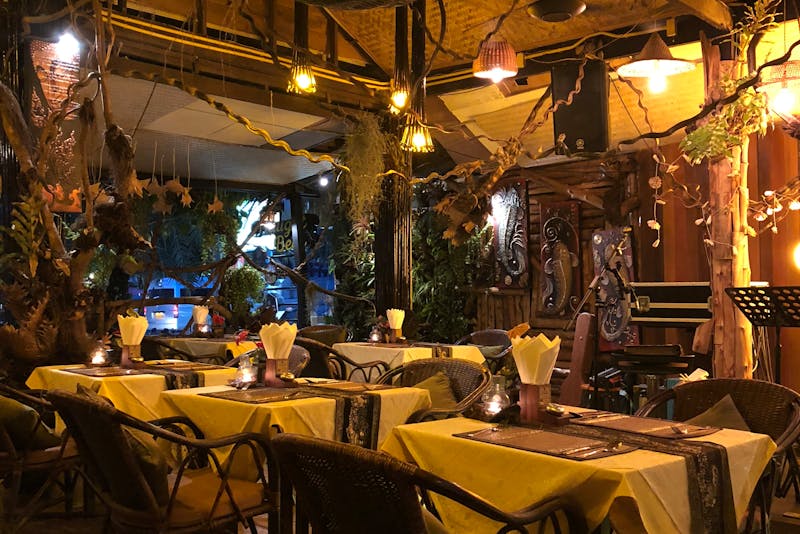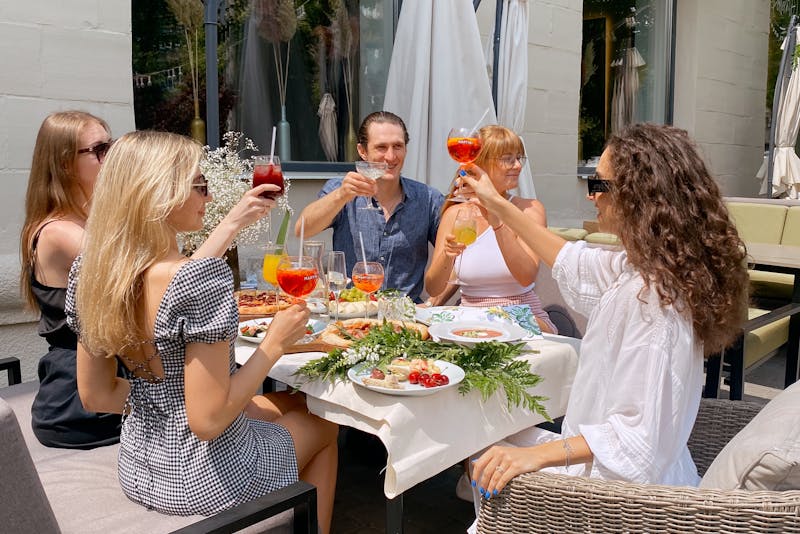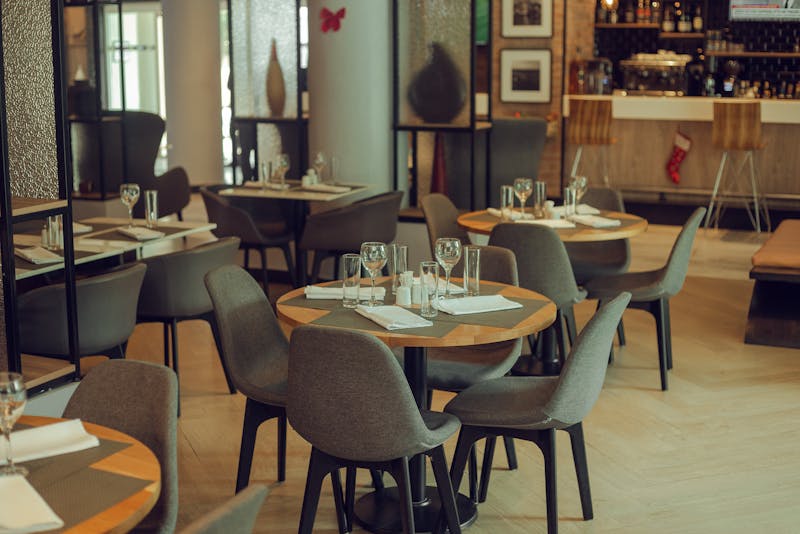
- Match the restaurant’s ambiance, menu, and setting to the occasion and your guests’ preferences.
- Consider location, parking, and accessibility to ensure a smooth and convenient dining experience.
- Review menus carefully for variety, freshness, and dietary accommodations to suit all guests.
- Read multiple customer reviews and check recent photos to gauge food quality and service consistency.
- Great service and hospitality can elevate even a simple meal into a memorable experience.
- Set a realistic budget that balances cost with food quality, comfort, and overall value.
- Special features like private dining rooms, outdoor seating, or live entertainment can make an occasion truly special.
Choosing the right restaurant can transform any gathering into an unforgettable experience. Whether you’re planning a romantic date, celebrating a family milestone, hosting a business dinner, or simply meeting friends, the setting and dining experience matter just as much as the food itself. The challenge lies in balancing ambiance, menu variety, service, and budget—without compromising the joy of dining out.
If you’ve ever searched for the top 10 restaurants in your city or spent hours scrolling through reviews, you already know how overwhelming the choices can be. This guide simplifies the process by breaking down every important factor you should consider to ensure that your next meal out is the perfect fit for your occasion.
Understand the Occasion and Your Guests’ Preferences
The first step to finding the perfect restaurant is to clearly understand the type of event you’re planning and who will be joining you. The occasion sets the tone for everything—from the type of cuisine to the atmosphere and even the dress code.
- Romantic dinners: Look for intimate spaces with low lighting, soft music, and tables spaced far enough apart for privacy. A restaurant with scenic views or a cozy, elegant interior often adds to the romantic charm.
- Family gatherings: Prioritize comfort and flexibility. Choose restaurants with family-friendly menus, ample seating, and high chairs if young children are attending. Casual or buffet-style restaurants are often ideal for larger family groups.
- Business meetings or corporate dinners: Professionalism and convenience are key. The ideal venue offers quiet spaces, excellent service, and efficient timing, so the focus remains on conversation and networking.
- Casual meet-ups: If you’re just catching up with friends, aim for relaxed venues with good seating arrangements and a lively yet not-too-noisy atmosphere.
Don’t forget to factor in dietary preferences and restrictions. Guests may have food allergies or specific diets such as vegetarian, vegan, gluten-free, or halal. A quick glance at the restaurant’s online menu or a short phone call can help you confirm that there are suitable options for everyone.
Location and Accessibility Matter
The restaurant’s location is a critical yet often overlooked detail. Even the best restaurant experience can lose its charm if your guests struggle to get there or find parking.
When considering location, keep the following in mind:
- Proximity: Select a restaurant that’s central or convenient for most of your guests, especially if they’re coming from different parts of town.
- Parking: A place with free or easily accessible parking can save stress and time. In busy districts, consider valet parking or nearby parking garages.
- Public transportation: If your guests are relying on buses, trains, or ride-sharing, choose a spot close to transit routes.
- Accessibility: Make sure the restaurant has wheelchair access, comfortable seating, and clean, accessible restrooms.
For special occasions, the journey itself can be part of the experience. Dining at a restaurant in a scenic location—such as by the waterfront, in a mountain setting, or within a historic district—adds an extra layer of enjoyment.
Ambiance and Atmosphere: Setting the Mood

A restaurant’s atmosphere can make a meal memorable long before the first bite. Lighting, music, décor, and layout all play a role in shaping your dining experience.
Before booking, take a few steps to get a sense of the ambiance:
- Browse photos and videos online to see what the space looks like during different times of day.
- Read recent reviews that mention the restaurant’s energy level, noise, and crowd type.
- Visit in person if possible—sometimes, firsthand experience is the best way to judge whether it feels right for your event.
The goal is to find a setting that complements your purpose. A candle-lit dining room may feel romantic but might not work for a business meeting. Likewise, a loud, bustling restaurant might energize a group of friends but overwhelm older family members.
Evaluate the Menu and Cuisine Options
A great restaurant is defined by its food, but also by how well it caters to different tastes and preferences. When reviewing menus, look for variety, creativity, and freshness.
Here’s what to pay attention to:
- Menu diversity: Restaurants with a balanced mix of appetizers, mains, and desserts ensure that everyone can find something appealing.
- Specialty dishes: Check for signature items or chef recommendations that reflect the restaurant’s culinary strengths.
- Ingredient sourcing: Restaurants that highlight farm-to-table ingredients or seasonal produce often deliver fresher and more flavorful dishes.
- Portion sizes: Good value doesn’t always mean large portions, but servings should match the restaurant’s pricing and style.
- Dietary options: Gluten-free, vegan, or allergen-friendly menus can make all guests feel included.
Before booking, browse online menus or call ahead to confirm any dietary accommodations. For special celebrations, consider asking if the restaurant offers pre-fixe or tasting menus, which can turn your meal into a curated culinary experience similar to what you’d find at the top 10 restaurants worldwide.
Check Reviews and Recommendations
Reviews are among the most valuable tools for assessing a restaurant’s reliability and consistency. They offer real-world insights into service, food quality, and cleanliness that go beyond promotional photos or descriptions.
When reading reviews, look for patterns, not one-off complaints. If multiple diners praise the same dish or consistently mention excellent service, it’s a good sign. On the other hand, repeated complaints about wait times, rude staff, or unclean restrooms should raise red flags.
You can also:
- Ask for local recommendations from friends, co-workers, or online food communities.
- Consult professional review sites or local dining blogs to compare opinions from experts and casual diners.
- Check social media platforms for user-generated photos and honest feedback about portion sizes and presentation.
A little research goes a long way in ensuring you pick a place that lives up to expectations.
Service and Hospitality Make the Difference
Even with delicious food and a beautiful setting, poor service can ruin the experience. A restaurant’s staff plays a huge role in how comfortable and valued guests feel.
Good service includes:
- Prompt attention: Staff should seat guests quickly, take orders efficiently, and ensure timely delivery of meals.
- Knowledgeable servers: Waitstaff should be familiar with menu ingredients, portion sizes, and wine pairings.
- Adaptability: Great service means accommodating special requests, whether that’s splitting a bill, modifying a dish, or arranging a surprise dessert for a celebration.
- Consistency: Every guest should receive the same level of hospitality, no matter how busy the restaurant is.
If you’re organizing a large gathering or event, call ahead to discuss group accommodations. This ensures the restaurant can manage table arrangements and timing smoothly.
Mind Your Budget Without Compromising Quality
While dining out is a treat, cost is always a consideration. Fortunately, finding a restaurant that fits your budget doesn’t mean sacrificing quality.
Here are ways to balance experience with expense:
- Research price ranges online: Most restaurants list menu prices or sample menus on their websites.
- Take advantage of lunch specials or weekday offers: Upscale restaurants often have more affordable midday menus.
- Use dining apps and loyalty programs: Some offer exclusive discounts or reward points.
- Consider set menus for groups: Fixed-price meals can make budgeting easier and ensure everyone gets equal value.
Ultimately, value is about the entire experience—taste, service, ambiance—not just the bill. A moderately priced restaurant that delivers excellent food and attentive service can outshine even some of the top 10 restaurants when it comes to overall satisfaction.
Look for Special Features and Add-Ons

Some occasions call for something extra. Special features and amenities can elevate a standard meal into a memorable event.
Consider restaurants that offer:
- Private dining areas for intimate or professional gatherings.
- Outdoor seating with scenic views or fresh air during pleasant weather.
- Live music or entertainment to create a lively, enjoyable vibe.
- Custom arrangements such as birthday cakes, floral decorations, or surprise setups.
- Corkage options if you’d like to bring your own wine for a celebration.
Always confirm availability and reservation requirements in advance, especially for weekends or holidays.
Use Technology to Your Advantage
Modern diners have countless tools to make the restaurant selection process easier. Online platforms can help you compare ratings, menus, and even estimated wait times.
Take advantage of these digital tools:
- Reservation apps: They allow you to secure tables instantly and avoid long waits.
- Map and review integrations: Platforms like Google Maps combine directions, user photos, and customer feedback in one place.
- Restaurant websites: These often include photo galleries, detailed menus, and information about parking or special promotions.
- Social media pages: Great for checking real-time updates about seasonal menus or events.
Using these resources can save time and prevent unpleasant surprises on the day of your outing.
Conclusion
Choosing the perfect restaurant for any occasion is about more than just picking a place that serves good food. It’s about crafting an experience that matches the purpose, mood, and preferences of everyone involved. From evaluating location and ambiance to checking menus, service, and budget, each factor plays an essential role in ensuring a pleasant meal.
Remember to consider accessibility, service consistency, and the little extras that make dining out special. With thoughtful planning—and perhaps a bit of inspiration from the top 10 restaurants in your area—you can find the perfect spot for any celebration, business meeting, or casual meal.
A great restaurant isn’t just where you eat—it’s where memories are made, conversations flow, and every bite feels worth savoring. By following these guidelines, you’ll be ready to choose with confidence and enjoy every dining experience to the fullest.
